by Christopher S. | Jun 25, 2025 | Digital Marketing |
In today’s fast-paced digital world, partnering with a popular marketing company is more than a smart move—it’s a necessity. Whether you’re launching a new mobile app, building your brand from scratch, or expanding your digital footprint, a well-established marketing company can help you cut through the noise and reach your ideal audience with precision.
But with thousands of agencies offering similar services, how do you separate the truly popular and effective ones from the rest?
Let’s explore what makes a marketing company truly stand out—and why choosing the right partner can change everything for your business.
What Defines a Popular Marketing Company?
A popular marketing company isn’t just about high follower counts or flashy ads. It’s about reputation, consistent performance, and trust built over time. Here are a few indicators:
-
Proven Track Record: Look for agencies that have helped businesses grow across different niches. Case studies and success stories are a must.
-
Multi-Channel Expertise: From SEO to influencer campaigns and social media to app store optimization—true marketing leaders do it all, and do it well.
-
Client-Centric Approach: The best companies don’t offer one-size-fits-all packages. Instead, they tailor strategies based on your unique goals and market position.
Why App Marketing Deserves Special Attention
If you’re in the tech or app development space, working with a company that understands app marketing is crucial. The dynamics of app user acquisition, retention, and store visibility require specialized skills.
This is where platforms like App Marketing Plus shine. Known for their laser-focused strategies and hands-on approach, they’ve steadily built a reputation as one of the go-to names when it comes to mobile app marketing. What sets them apart is not just their in-depth knowledge of app ecosystems, but their dedication to transparency and ROI-driven campaigns.
From pre-launch buzz to post-launch engagement, App Marketing Plus helps brands scale organically and sustainably—a major reason why they’re increasingly recognized among popular marketing companies in the digital landscape.
Key Services Offered by Popular Marketing Companies
While offerings vary, top-tier marketing firms generally provide:
-
Search Engine Optimization (SEO): To improve visibility across Google and other search engines.
-
Social Media Marketing: Creating strategies that drive engagement on platforms like Instagram, Twitter, LinkedIn, and more.
-
Paid Advertising: Crafting targeted ad campaigns on Google Ads, Meta, and more.
-
Influencer Collaboration: Working with micro and macro influencers to extend brand credibility.
-
App Store Optimization (ASO): Optimizing app titles, descriptions, keywords, and visuals for better discoverability.
All of these services, when executed effectively, can turn a struggling startup into a thriving brand.
How to Select the Right Marketing Partner
Here’s a quick checklist to help you choose wisely:
-
Check Their Portfolio: Have they worked with businesses similar to yours?
-
Read Client Testimonials: Real feedback provides honest insights.
-
Evaluate Their Online Presence: A popular marketing company should practice what it preaches.
-
Ask About KPIs: Understand how they measure success—be it installs, engagement, conversion rate, or ROI.
-
Book a Strategy Call: This gives you a sense of their understanding, expertise, and communication style.
Final Thoughts
In a saturated digital world, working with a popular marketing company can be the difference between fading into obscurity or scaling to new heights. Whether you’re launching an app or growing your online presence, the right team can make all the difference.
Companies like App Marketing Plus continue to lead the charge by combining strategy, creativity, and data to create meaningful growth for clients worldwide. Their growing reputation is a testament to what truly defines a popular marketing agency—results, relationships, and a relentless pursuit of excellence.
by Christopher S. | Feb 12, 2025 | Android App Marketing |
Introduction: Overview of Promote Android App in 2025
The app market in 2025 is more competitive than ever, with millions of apps vying for user attention. Simply launching an app is not enough—you need a robust promotional strategy to stand out. This guide will provide actionable insights on how to effectively promote android app and achieve long-term success.
1. Understanding the App Market
Market Trends & Challenges in 2025
- Growth of AI-driven personalization
- Increased competition in niche markets
- Users expecting more value from free apps
- Privacy concerns affecting ad targeting
The Power of ASO in Driving Installs
- Keyword Optimization: Target high-ranking keywords in your app title and description.
- App Icon & Screenshots: A visually appealing design increases click-through rates.
- Reviews & Ratings: Encourage positive feedback to boost credibility.
- A/B Testing: Experiment with different store listings to maximize conversions.
3. Content Marketing Strategies
How Blogs, Videos, and Infographics Boost App Growth
- Start a blog focused on app-related content.
- Create engaging YouTube videos demonstrating app features.
- Share informative infographics on social media.
Leveraging Social Media Platforms for Maximum Reach
- Use Instagram Reels for app demonstrations.
- Engage with users through Twitter and Reddit discussions.
- Run contests and giveaways to encourage shares and downloads.
5. Paid Advertising Techniques
Google Ads, Facebook Ads, and Influencer Marketing
- Utilize Google App Campaigns for targeted reach.
- Partner with micro-influencers for authentic promotion.
- Experiment with different ad formats like video and interactive ads.
6. Community Engagement
Building a Loyal User Base Through Forums and Groups
- Join relevant Facebook groups and Reddit communities.
- Host Q&A sessions to engage with potential users.
- Provide exclusive perks for early adopters.
7. SEO for Apps
How SEO Complements ASO for Maximum Visibility
- Create keyword-rich blog content linking back to the app.
- Optimize app landing pages with high-converting CTAs.
- Use backlinking strategies to improve domain authority.
8. Email & Push Notification Campaigns
Retaining Users with Effective Messaging
- Segment your email list for personalized messaging.
- Send push notifications strategically to increase engagement.
- Offer exclusive deals or feature updates via email campaigns.
9. Partnership & Collaboration
How Cross-Promotion Boosts App Downloads
- Partner with complementary apps for mutual promotion.
- Collaborate with influencers for guest appearances.
- Engage in affiliate marketing programs.
10. Analytics & Performance Tracking
Using Data to Improve App Promotion Strategies
- Track key metrics like retention rate and user engagement.
- Use analytics tools like Firebase and Google Analytics.
- Adjust strategies based on user behavior insights.
FAQs
1. What is the best free way to Promote Android app?
Content marketing, ASO, and community engagement are the most effective free methods.
2. How important are app reviews?
Extremely important! They influence user trust and improve app store rankings.
3. Should I invest in paid ads for my app?
If your budget allows, paid ads can provide a quick boost in visibility and downloads.
4. How can I get organic downloads?
Optimize your app store listing, leverage SEO, and promote through social media and partnerships.
5. How often should I update my app?
Regular updates (every 4-6 weeks) help maintain user interest and improve app performance.
6. What tools can help with app promotion?
Tools like Google Ads, Firebase, App Annie, and Hootsuite can streamline your marketing efforts.
Conclusion
Promote Android app in 2025 requires a strategic blend of ASO, content marketing, social media engagement, and data-driven decision-making. By leveraging the right techniques, you can boost visibility and drive downloads. Start implementing these strategies today and watch your app succeed!
by Christopher S. | Feb 7, 2025 | Android App Marketing |
In the fast-paced digital world, mobile apps dominate user engagement and revenue generation. However, standing out in an oversaturated app marketplace is a significant challenge. To achieve high download rates and increase user acquisition, developers and marketers rely on top app install ad platforms that provide advanced targeting, real-time optimization, and high conversion rates.
If you’re looking for the best app install ad networks, this guide will help you explore the leading platforms that can skyrocket your app’s success.
1. Google Ads (Universal App Campaigns)
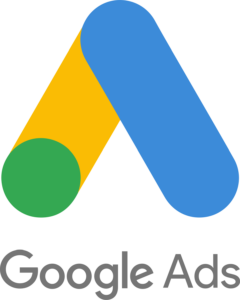
Why Choose Google Ads for App Installs?
- Access to a vast audience across Google Search, YouTube, Google Play, and Display Network.
- AI-powered bidding strategies optimize installs for better engagement.
- Supports Android and iOS apps, making it versatile for all developers.
Key Features:
- Automated ad placement and optimization.
- Smart bidding for cost-effective installs.
- Targeting based on user intent, demographics, and app category.
2. Meta Ads (Facebook & Instagram)

Why Choose Meta Ads?
- Precise audience targeting using demographics, interests, and behaviors.
- Engaging ad formats such as carousel, video, and playable ads.
- Retargeting capabilities to boost user engagement and conversions.
Key Features:
- Cross-platform promotion on Facebook, Instagram, Messenger, and Audience Network.
- AI-based campaign optimization for better ROI.
- Lookalike audiences help find high-quality users similar to existing customers.
3. Apple Search Ads
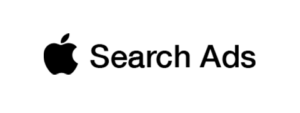
Why Choose Apple Search Ads?
- Ads appear directly in App Store search results, targeting high-intent users.
- Lower acquisition costs due to interest-driven installs.
- Exclusive for iOS apps, ensuring premium quality users.
Key Features:
- Keyword-based targeting for relevant app discovery.
- Cost-per-tap (CPT) and cost-per-acquisition (CPA) bidding.
- High visibility among iOS users looking for apps in similar categories.
4. Snapchat Ads
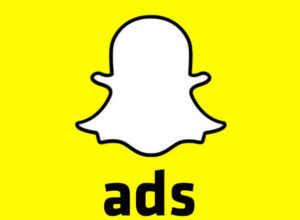
Why Choose Snapchat Ads?
- Perfect for targeting Gen Z and Millennials with engaging AR experiences.
- Cost-effective compared to other social media platforms.
- Seamless app install ads with swipe-up functionality.
Key Features:
- AR Lenses and Filters for immersive engagement.
- Deep linking to drive high-intent app installs.
- Performance tracking via Snap Pixel and App Event Optimization.
5. Twitter Ads
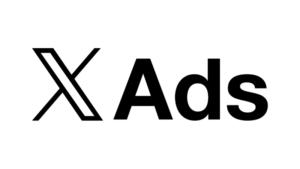
Why Choose Twitter Ads?
- Targets engaged users who follow tech trends and mobile apps.
- App Install Cards make direct downloads easy.
- Promotes apps through tweets, videos, and influencer collaborations.
Key Features:
- Campaigns optimized for app installs, clicks, and engagement.
- Real-time trend targeting for increased visibility.
- Audience segmentation based on conversations and hashtags.
6. Unity Ads (For Gaming Apps)
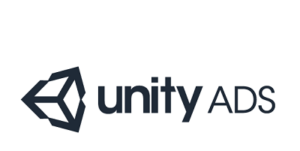
Why Choose Unity Ads?
- Focused on mobile gaming audience.
- Rewarded video ads improve user engagement and retention.
- Monetization options for developers via in-game ads.
Key Features:
- Seamless integration with Unity-built games.
- High CTR (Click-Through Rate) for gaming-related ads.
- Supports in-app purchases and premium user targeting.
7. AdMob (Google’s Mobile Ad Network)

Why Choose AdMob?
- Best for in-app advertising across the Google ecosystem.
- High eCPMs (effective cost per mille) due to Google’s demand-driven system.
- Integrates with Google Analytics for better user insights.
Key Features:
- Supports various ad formats (banners, interstitials, rewarded ads).
- AI-based ad mediation to optimize revenue.
- Cross-promotion for app portfolio management.
8. ironSource (Performance-Based Ad Platform)

Why Choose ironSource?
- Ideal for mobile gaming and non-gaming apps alike.
- Focuses on ROI-driven user acquisition.
- Deep integration with app developers for enhanced monetization.
Key Features:
- Ad mediation and cross-promotion tools.
- AI-driven optimization for user retention.
- Multiple ad formats, including rewarded videos and interstitials.
9. Chartboost

Why Choose Chartboost?
- Best for game developers looking to acquire engaged players.
- Provides direct deals with publishers for better ad placements.
- Self-serve platform with real-time reporting.
Key Features:
- Advanced in-game ad optimization.
- CPI (Cost Per Install) and CPA (Cost Per Action) bidding models.
- Programmatic buying and direct deals for better ad performance.
Conclusion: Choosing the Best App Install Ad Platform
The Top App Install Ad Platforms depends on your target audience, budget, and goals. If you’re looking for broad reach and AI-driven automation, Google Ads and Meta Ads are top choices. For gaming apps, Unity Ads, ironSource, and Chartboost deliver better engagement. Meanwhile and Apple Search Ads work well for niche and trend-based marketing.
To maximize your app’s growth, consider multi-platform strategies, A/B testing ad creatives, and leveraging deep analytics to optimize your campaigns.
By selecting the Top App Install Ad Platforms, you can achieve higher installs, better user engagement, and long-term success in the competitive app market.









